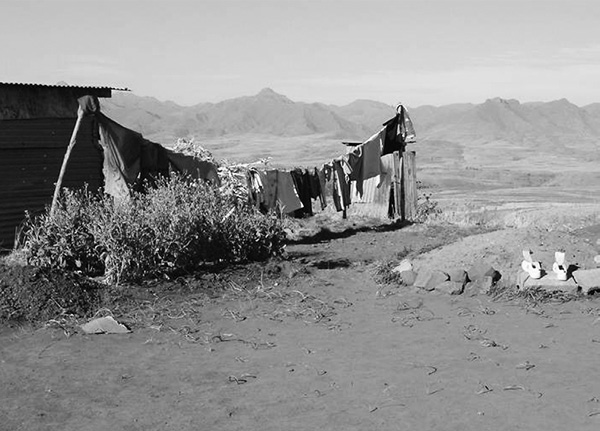
MEMORY OF A DROWNING LANDSCAPE - PHASE 1
first performed on April 21, 2016
National University of Lesotho public grounds, Roma, Lesotho
performed once in 2016
KATT LISSARD
The Theatre Unit, Litseo Mosenene, Goitumetswe Moseki
New York, NY / Roma, Lesotho
160342604m160342604a160342604k160342604e160342604t160342604h160342604e160342604a160342604t160342604r160342604e160342604@160342604a160342604o160342604l160342604.160342604c160342604o160342604m
kattlissard.org
maketheatre.org
MEMORY OF A DROWNING LANDSCAPE - PHASE 1
KATT LISSARD
As part of the National Heritage Day Festival 2016 in Lesotho, a small mountainous country in southern Africa, the Theatre Unit was asked to create a piece of performance focused on cultural heritage and the environment. The festival was the day before Earth Day, and organizers wanted us to emphasize environmental concerns within the nation’s unique cultural context. My history of creating performance in Lesotho began in 2005 around social issues like HIV/AIDS, domestic violence, and gender inequity, but since 2012 I’ve been experimenting with performance around the environmental destruction that’s ravaging the country due to massive dam building, deforestation, and global warming. The goal is to use performance and installation to capture the essence of place and articulate the global threat of climate change by looking at local loss—to concentrate on intangible aspects of culture that resist easy illustration. In collaboration with students, colleagues, and affected communities, I’m pursuing resonant metaphors for what has vanished.
Our timeframe for creating this specific piece was a three-day immersive performance residency. We began by playing with ideas of giving and receiving directions (verbal and non-verbal) in places that are dependent on disappearing landmarks and flexible concepts of time. Our audition “assignment” for would-be participants was to ask three friends, relatives, or acquaintances who still lived in the rural areas for directions to their home villages. The results were poignant, confusing, funny, and often so intricate in their overlap, backtracking, and repetitiveness that by the end of the auditioning process, we’d found the central visual thread of our performance before we’d even begun to create it.
Most intriguingly, almost every set of directions included one or two references to landmarks no longer there or or which had been transformed in ways that made them unrecognizable except through a dependence on community memory of what had been. This was one of the most striking things to emerge from the work and the incomplete, compromised, semi-imaginary directions; the level of “optimistic denial” implicit in the memory-laden reliance on landmarks or places that were no more; a refusal to accept the absence of formerly essential natural signposts because the references to them were now part of a new geography of memory. As we began refining the threads and tableaux and embodying the markers in three-dimensional space as part of the larger piece, it became obvious that what we were bringing into performative life were allegorical landscapes and universal reference points.